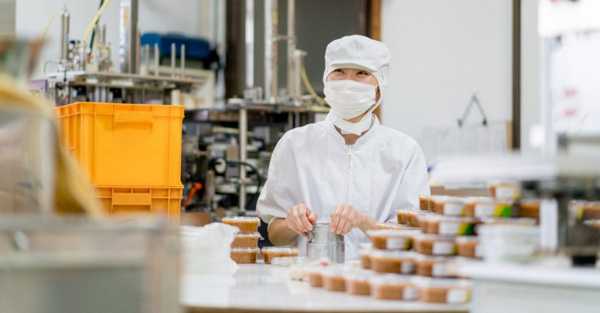ハウスクリーナー募集|未経験OK・高時給の清掃スタッフ求人情報
Breast Cancer Treatment: Understanding Your Options and Innovations in Care
Breast cancer is one of the most commonly diagnosed cancers in women worldwide, but thanks to ongoing advances in medical research and treatment options, survival rates have improved significantly over the past few decades. There are various treatment options available, and the right one depends on factors such as the type and stage of cancer, hormone receptor status, and the patient’s overall health. This article will explore the primary treatments for breast cancer, as well as the latest advances that are shaping the future of care.
Breast cancer is one of the most commonly diagnosed cancers in women worldwide, but thanks to ongoing advances in medical research and treatment options, survival rates have improved significantly over the past few decades. There are various treatment options available, and the right one depends on factors such as the type and stage of cancer, hormone receptor status, and the patient’s overall health. This article will explore the primary treatments for breast cancer, as well as the latest advances that are shaping the future of care.

1. Understanding Breast Cancer
Breast cancer occurs when cells in the breast tissue begin to grow uncontrollably. The disease can develop in the milk ducts (ductal carcinoma) or in the lobules (lobular carcinoma), or in other parts of the breast tissue. While breast cancer primarily affects women, men can also develop the disease, though it is far less common.
Breast cancer is categorized into several types, and treatment plans are customized based on the characteristics of the cancer, including:
- Hormone receptor-positive (HR-positive): The cancer cells have receptors for estrogen (ER) or progesterone (PR), and the growth of the cancer is fueled by these hormones.
- HER2-positive: The cancer cells have an excess of the HER2 protein, which promotes cancer cell growth.
- Triple-negative: The cancer is negative for estrogen receptors, progesterone receptors, and HER2. This type is more aggressive and harder to treat.
2. Types of Breast Cancer Treatment
Treatment for breast cancer typically involves a combination of therapies. The primary treatment options include:
A. Surgery
Surgery is often the first step in treating breast cancer. The goal is to remove the tumor or the entire breast (in the case of mastectomy). Types of surgery include:
- Lumpectomy: Removal of the tumor and a small margin of healthy tissue around it, preserving the rest of the breast. This is often referred to as "breast-conserving surgery."
- Mastectomy: Removal of the entire breast. This may be recommended for larger tumors or if the cancer has spread throughout the breast.
- Sentinel Node Biopsy: Removal of a few of the first lymph nodes (sentinel nodes) that drain the breast. This helps determine if cancer has spread to other parts of the body.
- Axillary Lymph Node Dissection: If cancer has spread to the lymph nodes, more lymph nodes may be removed to prevent further spread.
Surgery is often followed by other treatments to reduce the risk of recurrence.
B. Radiation Therapy
Radiation therapy uses high-energy rays to kill cancer cells. It is commonly used after surgery to eliminate any remaining cancer cells, especially after a lumpectomy. Radiation can also be used to treat cancer that has spread to nearby lymph nodes.
There are two main types of radiation therapy:
- External beam radiation: The most common form, where radiation is directed at the breast from outside the body.
- Brachytherapy: A less common method where a radioactive source is placed directly inside or near the tumor site.
Radiation is typically given over a few weeks, and side effects may include skin irritation, fatigue, and changes in the appearance of the breast.
C. Chemotherapy
Chemotherapy uses drugs to kill or slow the growth of cancer cells throughout the body. It is usually recommended if the cancer is large, has spread to lymph nodes, or if there is a high risk of recurrence. Chemotherapy can be given before surgery (neoadjuvant therapy) to shrink the tumor or after surgery (adjuvant therapy) to destroy any remaining cancer cells.
Common chemotherapy drugs for breast cancer include:
- Cyclophosphamide
- Doxorubicin
- Docetaxel
- Paclitaxel
Chemotherapy can have side effects such as nausea, hair loss, fatigue, and an increased risk of infection. The side effects vary depending on the drugs used and the individual’s response to treatment.
D. Hormone Therapy
Hormone therapy is used to treat hormone receptor-positive breast cancer by blocking the body’s production of estrogen or by blocking estrogen receptors on cancer cells. This type of treatment is particularly effective in cancers that rely on estrogen to grow.
Common hormone therapies include:
- Tamoxifen: A drug that blocks estrogen receptors in breast tissue. It is typically used for premenopausal women.
- Aromatase inhibitors: These drugs, including letrozole, anastrozole, and exemestane, block the production of estrogen in postmenopausal women.
- Ovarian suppression: In premenopausal women, suppressing the ovaries’ estrogen production through medications or surgery can also be part of treatment.
Hormone therapy is often used for several years following surgery and chemotherapy to reduce the risk of cancer recurrence.
E. Targeted Therapy
Targeted therapies focus on specific molecules or pathways that are involved in the growth and spread of cancer cells. This treatment is often used for HER2-positive breast cancer, but can also be used for other types of breast cancer.
Some common targeted therapies for breast cancer include:
- Trastuzumab (Herceptin): A drug that targets the HER2 protein and prevents cancer cells from growing.
- Pertuzumab (Perjeta): Another HER2-targeted therapy that is often used in combination with trastuzumab.
- Palbociclib (Ibrance): Used to block proteins that promote cancer cell growth in HR-positive, HER2-negative cancers.
These therapies tend to have fewer side effects than chemotherapy, as they specifically target cancer cells.
F. Immunotherapy
Immunotherapy is a treatment that helps the immune system recognize and destroy cancer cells. For certain types of breast cancer, especially triple-negative breast cancer, immunotherapy may be used.
The PD-1/PD-L1 inhibitors (such as atezolizumab or pembrolizumab) are examples of immunotherapy drugs being used to help the immune system fight breast cancer. These drugs are typically used in combination with chemotherapy for advanced-stage cancers.
3. Advances in Breast Cancer Treatment
The landscape of breast cancer treatment is continually evolving, with new therapies and technologies offering hope for patients. Some of the exciting advances include:
- PARP inhibitors: Used for patients with BRCA mutations, these drugs (such as olaparib) target cancer cells with defective DNA repair mechanisms.
- Cancer vaccines: Researchers are developing vaccines that could prevent or treat breast cancer by training the immune system to target cancer cells.
- Personalized Medicine: Advances in genetic testing and molecular profiling allow doctors to tailor treatment to the unique genetic makeup of each patient’s tumor. This ensures more precise and effective treatment, with fewer side effects.
4. Managing Side Effects and Supporting Recovery
The physical and emotional impact of breast cancer treatment can be significant. Managing side effects and improving quality of life are essential parts of the treatment journey. Common approaches include:
- Physical therapy: To help patients regain strength, mobility, and function after surgery or radiation.
- Support groups: Emotional support from family, friends, or a support group can help patients cope with the mental challenges of a cancer diagnosis and treatment.
- Nutritional support: A well-balanced diet and hydration are important during treatment to maintain energy levels and support the immune system.
- Lymphedema therapy: For patients who undergo lymph node surgery, lymphedema (swelling in the arms or legs) may occur. Specialized therapy can help manage this condition.
5. Conclusion
Breast cancer treatment has advanced significantly in recent years, offering patients a range of options that can lead to better outcomes and improved quality of life. From surgery and chemotherapy to hormone therapy, targeted therapy, and immunotherapy, doctors now have more tools than ever to fight this disease. With personalized treatment plans and ongoing innovations, the future of breast cancer treatment looks bright.
If you or a loved one is diagnosed with breast cancer, it’s important to consult with a multidisciplinary medical team to develop an individualized treatment plan that best suits the specific type and stage of cancer. Early detection, combined with advanced treatments, has dramatically improved survival rates, making breast cancer a highly treatable condition for many.










